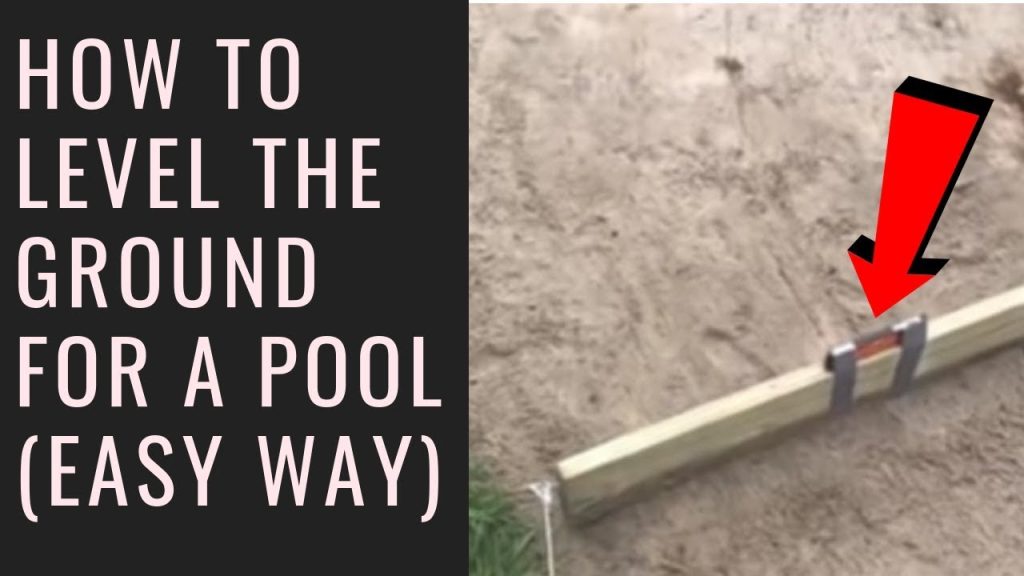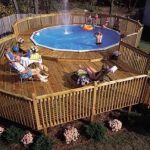Leveling the ground for a pool is a crucial step in ensuring the stability and longevity of your pool. A properly leveled ground not only enhances the aesthetics of your pool area but also helps in preventing any structural issues in the future. In this blog post, we will discuss the step-by-step process of leveling the ground for a pool to create a safe and enjoyable swimming environment for you and your family.
Materials Needed:
- Shovel
- Rake
- Tape Measure
- Level
- Sand or Gravel
Step 1: Choose the Location
First and foremost, you need to select a suitable location for your pool. Ensure that the area is away from any trees, overhead power lines, or underground utilities. Mark the perimeter of the pool using spray paint or stakes and string.
Step 2: Clear the Area
Remove any rocks, debris, or vegetation from the marked area using a shovel or rake. It is important to have a clean and clear surface to work with for accurate leveling.
Step 3: Measure and Level
Use a tape measure to check the dimensions of the marked area and ensure it matches the size of the pool. Next, use a level to check the slope of the ground. The ground should be level within a quarter of an inch for optimal pool installation.
Step 4: Fill and Compact
If the ground is not level, you may need to add sand or gravel to fill in any low spots. Spread the material evenly and use a compactor to compact the ground. Repeat this process until the ground is level and compacted properly.
Step 5: Check Again
After filling and compacting the ground, use the level to check for any remaining uneven areas. Make adjustments as needed to ensure the entire area is perfectly level.

Credit: www.angi.com
Step 6: Install the Pool
Once the ground is leveled and compacted, you can proceed with the installation of the pool according to the manufacturer’s instructions. Having a level base will make the installation process smoother and help in maintaining the structural integrity of the pool.
Step 7: Finishing Touches
After the pool is installed, add a layer of sand or protective padding on the bottom to provide cushioning and protection. You can also consider adding landscaping around the pool area to enhance its overall look.

Credit: www.youtube.com
So these are the easiest few steps on how you can level a pool ground without digging. Hope now you can easily install a pool.
Benefits of Leveling Ground for a Pool
Leveling the ground for a pool offers several benefits, including:
- Preventing structural issues
- Ensuring proper water drainage
- Creating a safe and stable pool environment
- Enhancing the overall aesthetics of the pool area
Frequently Asked Questions
Q: Why is it important to level the ground for a pool?
A: Level ground ensures proper stability and support for the pool structure, preventing issues like leaning, shifting, or uneven water distribution.
Q: How do I determine if my ground is level enough for a pool?
A: Use a long straightedge or a laser level to check for any noticeable slopes or unevenness. Aim for a perfectly level surface to avoid future problems.
Q: What tools do I need to level the ground for a pool?
A: Common tools include a shovel, rake, tamper, level, and possibly a transit or laser level for precise measurements.
Q: Can I level the ground myself, or do I need professional help?
A: It’s possible to level the ground yourself with the right tools and techniques, but for larger pools or complex terrain, professional assistance may be advisable.
Q: How deep should I dig to level the ground for an above-ground pool?
A: The depth depends on the slope of the ground and the size of the pool. Generally, aim to dig deeper on the higher side to create a level surface.
Q: Do I need to remove all vegetation and debris before leveling the ground?
A: Yes, clear the area of any grass, roots, rocks, or debris that could interfere with the pool’s foundation or liner.
Q: What materials can I use to fill in low spots and level the ground?
A: Common materials include sand, crushed stone, or compacted soil. Choose a material that provides good drainage and compacts easily.
Final Words
Leveling the ground for a pool is a critical step in the pool installation process. By following the steps outlined in this blog post, you can ensure that your pool is installed on a stable and level base, providing you with a safe and enjoyable swimming experience for years to come.





